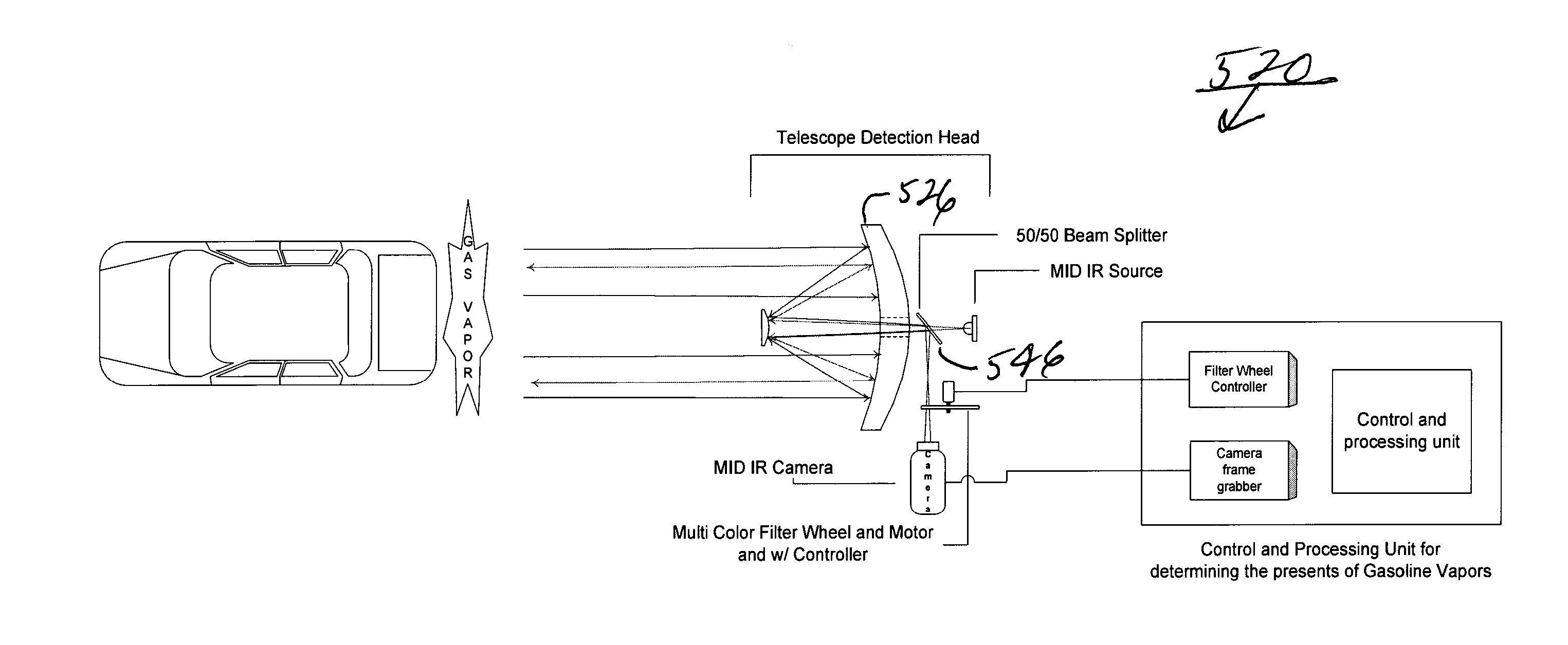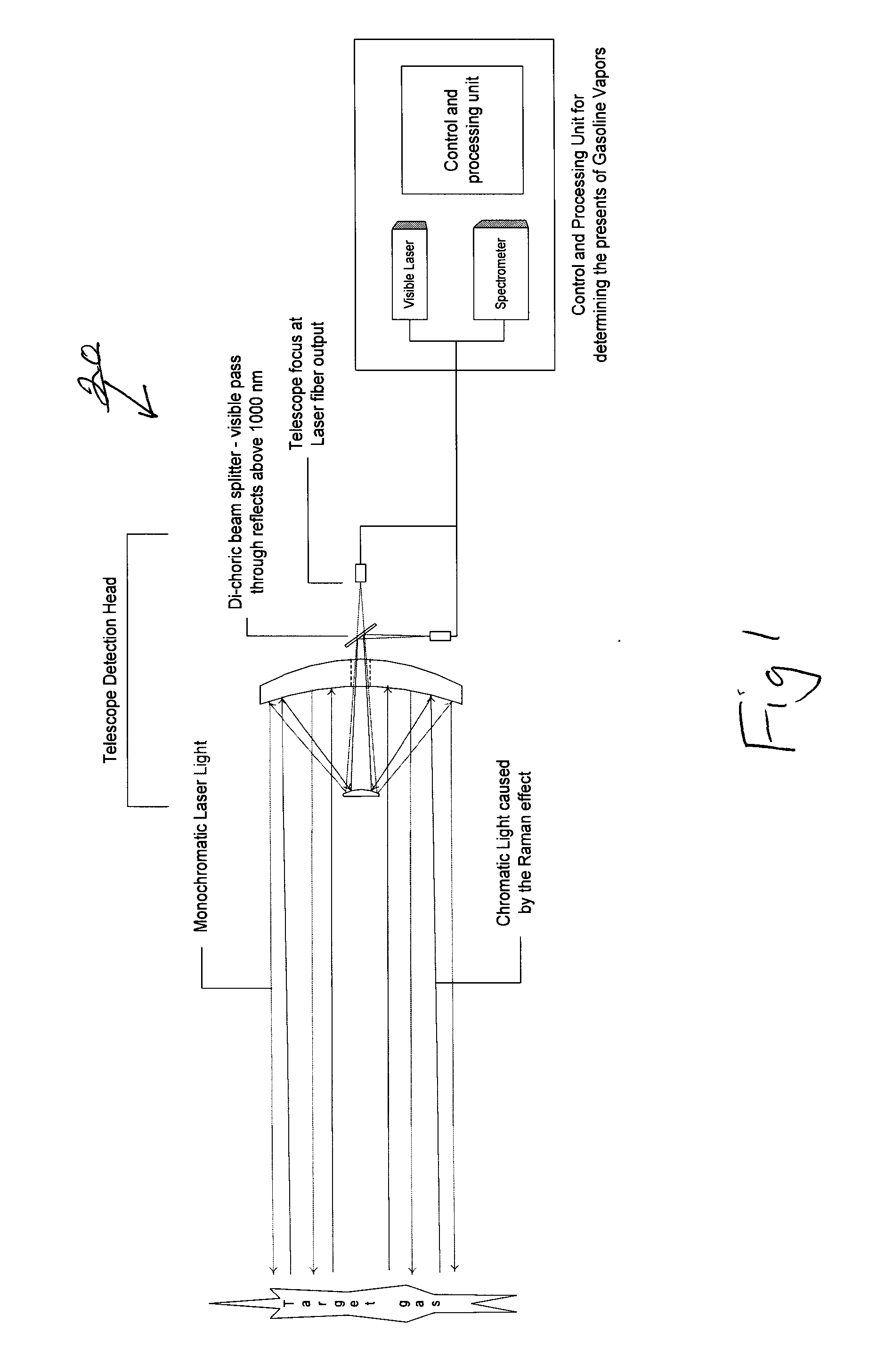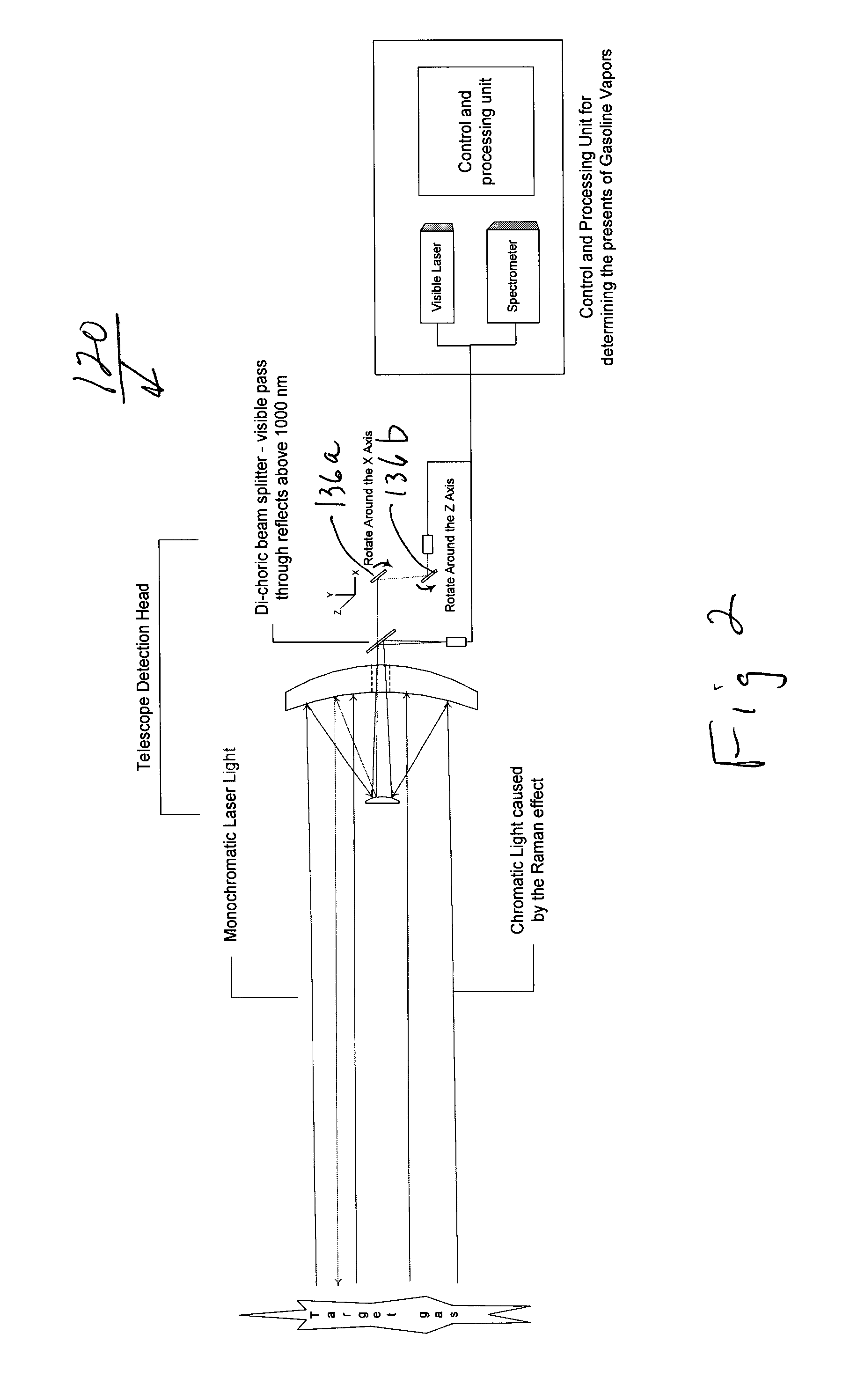Evaporative vehicle emission loss detection from a non-operating vehicle
a technology of evaporative vehicles and emission loss detection, which is applied in the direction of optical radiation measurement, fluid tightness measurement, instruments, etc., can solve the problems of evaporative emissions, hot soak loss, and variable temperature in the fuel system
- Summary
- Abstract
- Description
- Claims
- Application Information
AI Technical Summary
Benefits of technology
Problems solved by technology
Method used
Image
Examples
Embodiment Construction
[0046]Referring now to the drawings and the illustrative embodiments depicted therein, the diagram illustrated in FIG. 13 depicts the spectrum in the near infrared (NIR) through mid-infrared (MIR) of three types of distillate fuel vapors: unleaded gasoline, Diesel Fuel (DF2) and Jet Fuel (JP-8).
[0047]The embodiments below are intended to concentrate on the unleaded gasoline curve shown in FIG. 13, but could find application for other fuels as well. While there are multiple distinct absorption regions that are centered on 1.7, 2.4 and 3.4 micron wavelengths, the disclosed embodiments are for use in sensing evaporative emissions around the 1.7 and 3.4 micron sections of the curve. The main reasons for looking at this region of the spectrum is that there exists COTS mini spectrometers that are commercially available from sources, such as Ocean Optics and others, that measure in the NIR from 1.000 to 2.500 microns. Also, the use of a synthetic referencing for determining a baseline refe...
PUM
| Property | Measurement | Unit |
|---|---|---|
| pressure | aaaaa | aaaaa |
| wavelengths | aaaaa | aaaaa |
| wavelengths | aaaaa | aaaaa |
Abstract
Description
Claims
Application Information
 Login to View More
Login to View More - R&D
- Intellectual Property
- Life Sciences
- Materials
- Tech Scout
- Unparalleled Data Quality
- Higher Quality Content
- 60% Fewer Hallucinations
Browse by: Latest US Patents, China's latest patents, Technical Efficacy Thesaurus, Application Domain, Technology Topic, Popular Technical Reports.
© 2025 PatSnap. All rights reserved.Legal|Privacy policy|Modern Slavery Act Transparency Statement|Sitemap|About US| Contact US: help@patsnap.com



